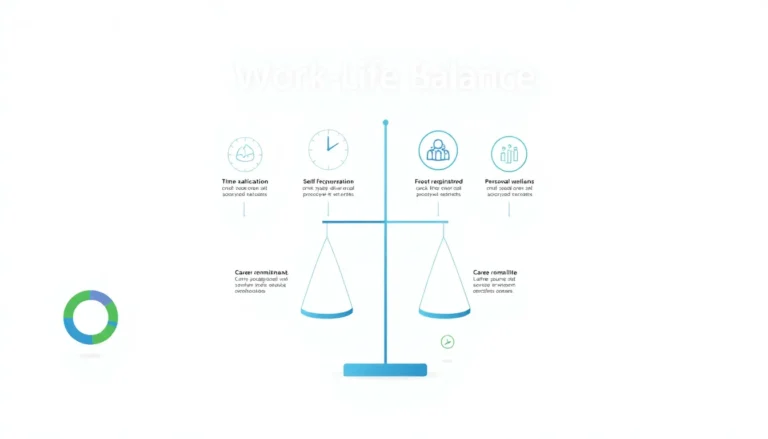Table of Contents
ToggleImagine standing in front of a vast chessboard, each piece a decision, and every move a reflection of your strategic mindset. Sounds intriguing, right? A strategic mindset is like a superpower: it enables one to navigate challenges and seize opportunities with ease. Whether you’re a business leader, a student, or someone just trying to figure out their next steps, cultivating this mindset can unlock doors you never knew existed. Ready to immerse and discover how to elevate your thinking? Let’s go.
Understanding Strategic Mindset

A strategic mindset goes beyond mere planning. It’s about viewing situations from multiple angles and understanding the broader implications of decisions. At its core, it combines analysis, foresight, and creativity. Think of it like being the captain of a ship: you wouldn’t just look at the waters right in front of you. Instead, you’d analyze the weather patterns, chart your course, and anticipate potential storms. This perspective is crucial because, in today’s fast-paced world, staying ahead requires more than just tactical moves. One needs to anticipate and adapt.
So, what makes this mindset so vital? It’s simple. Life throws curveballs all the time. Having a strategic approach allows for flexibility and responsiveness, so enhancing problem-solving abilities. For instance, someone with a strategic mindset doesn’t just react to a challenge: they pause, analyze, and then respond in a calculated manner, ensuring their action plan aligns with long-term objectives.
Key Traits of a Strategic Thinker
Absolutely, not everyone possesses a strategic mindset naturally. But, there are key traits that can be identified in individuals who do:
- Analytical Thinking: Strategic thinkers can dissect complex problems and analyze data effectively. They excel at breaking down information to understand what it means for their goals.
- Visionary Outlook: They can see the big picture and aren’t easily swayed by immediate distractions. This keeps them focused on long-term objectives.
- Adaptability: Change is inevitable, and strategic thinkers embrace it. They adjust plans based on new information, trends, or unforeseen circumstances.
- Effective Communication: It’s not just about thinking strategically. They also know how to share their thoughts clearly and engage others in their vision.
- Decisiveness: At some point, every strategic thinker must make tough choices. They weigh the options and proceed confidently, knowing they have a foundation to support their decisions.
Developing a Strategic Mindset
Transitioning to a strategic mindset doesn’t happen overnight. It’s a journey with several key steps. First, individuals should seek diverse experiences. Exposure to different fields or roles can broaden perspectives and enhance understanding. Next, consistent learning is paramount. Reading books, attending workshops, and seeking mentorship can provide invaluable insights.
Practicing daily reflection can also nurture one’s strategic thinking skills. By reviewing daily decisions and assessing outcomes, they can identify patterns in their thinking. Regularly asking questions like “What could I have done better?” or “What can I learn from this?” helps refine their approach.
Also, engaging in brainstorming sessions with peers fosters collaborative brainstorming. Exposing oneself to other perspectives can spark new ideas and solutions. Finally, setting SMART goals, Specific, Measurable, Achievable, Relevant, Time-bound, can help maintain focus and track progress along the journey.
Real-World Applications of Strategic Thinking
The beauty of a strategic mindset is its versatility. In business, for example, leaders use strategic thinking to foresee market trends and pivot accordingly. Companies that adapt quickly to consumer preferences often find themselves a step ahead of their competitors.
Consider the tech industry: firms like Apple have continually reinvented themselves through innovative strategies based on consumer needs. In healthcare, a strategic thinker might anticipate changes in policies and adapt practices to better serve patients, which can lead to improved outcomes and efficient care.
Even on a personal level, strategic thinking plays a critical role. When planning a career move, individuals analyze industry conditions, network with professionals, and project future trends to make informed decisions about their next steps. Whether in small tasks or major life decisions, this mindset empowers individuals to tackle challenges head-on, fostering a sense of control and purpose.
Challenges in Adopting a Strategic Mindset
Adopting a strategic mindset, while beneficial, isn’t without its challenges. A common obstacle individuals encounter is a fixation on short-term results. In a world that often prioritizes immediate outcomes, it can be hard to stay focused on long-term goals. Overcoming this requires discipline and a commitment to hold off on gratifying immediate needs in favor of bigger achievements.
Also, information overload can lead to analysis paralysis. In constantly evolving environments, individuals may find it tough to sift through data and make decisions. So, pinpointing what’s pertinent, cutting through the noise, and sticking with a clear decision-making framework can mitigate this effect.
Another hurdle is fear of failure. The fear of making a poor decision can inhibit risk-taking, which is a crucial component of strategic thinking. Embracing a mindset that views failure as a learning opportunity fosters resilience and encourages forward momentum.







